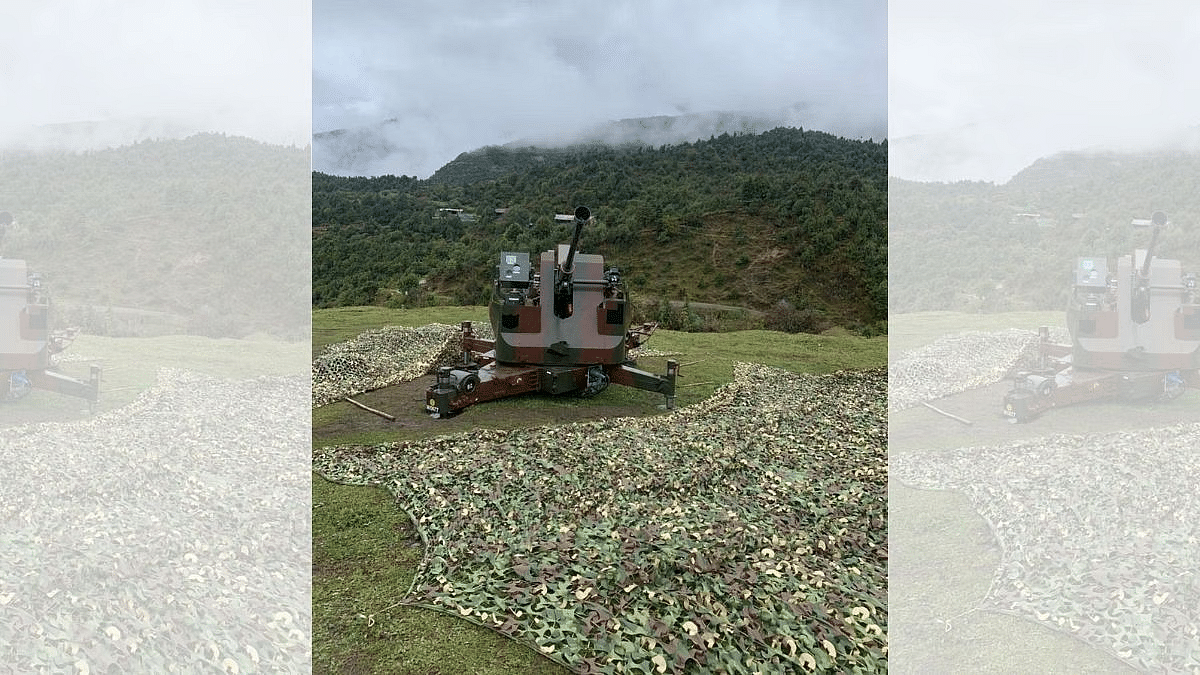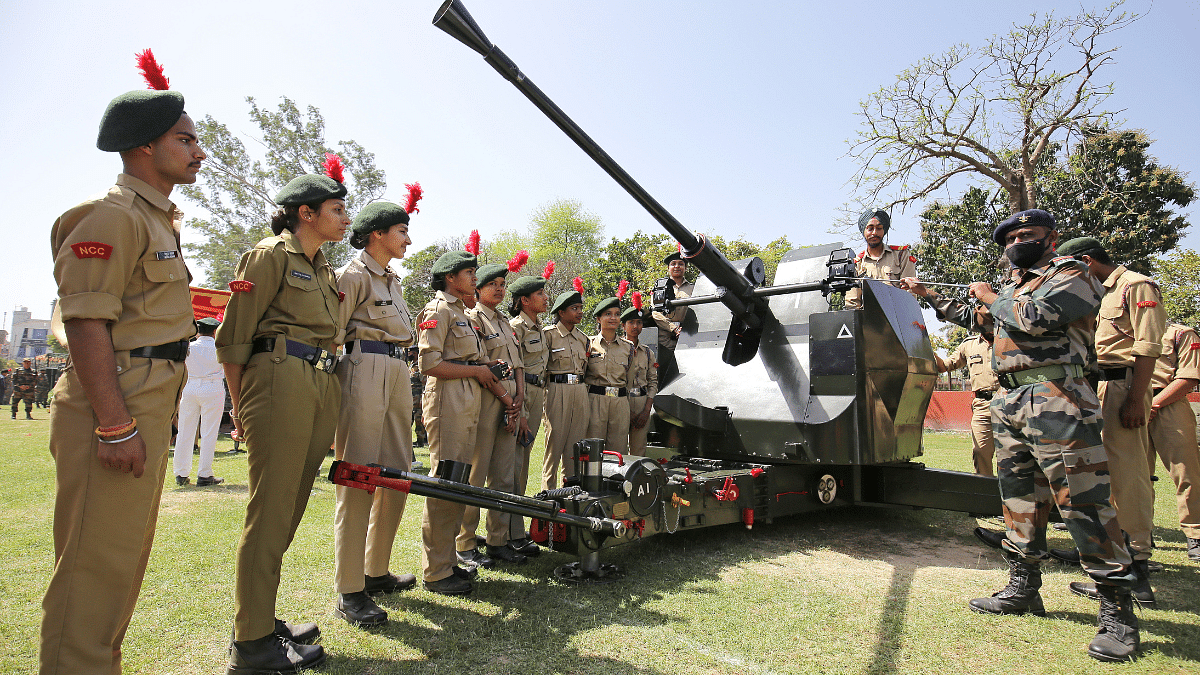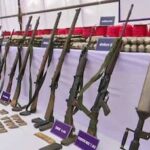Among the systems that responded to the drone threat were the upgraded 40-mm L/70 anti-aircraft guns, originally developed in the aftermath of World War II, that have since undergone a transformation through extensive upgrades. From Leh in the Union Territory of Ladakh to Sir Creek in Gujarat, these guns, along with other elements of the Indian air defence grid, played a crucial role in tracking and taking down incoming enemy drones.
The L/70 guns were originally developed in the late 1940s by Sweden’s AB Bofors as a successor to the widely used L/60. These two versions of the anti-aircraft guns earned the moniker “original Bofors”. Inducted by the North Atlantic Treaty Organization (NATO) first in 1952, it quickly became the NATO’s standard for a medium-calibre air defence platform, known for its high-velocity 40-mm rounds, a longer barrel and a faster cyclic rate.
Each 40-mm air defence gun fires around 300 rounds per minute with a muzzle velocity of 1,000 metres per second and has an effective range of three to four kilometres.
India inducted the L/70 guns in the early 1960s, first through imports and later via licensed production at the Gun Carriage Factory in Jabalpur. Over time, it became the backbone of India’s short-range air defence grid, with over a thousand guns deployed across forward air bases, cantonments and high-value infrastructure sites. But its original configuration with manual aiming and optical sights made it ill-suited to face modern threats like supersonic jets, rotary-wing drones and later, small unmanned aerial vehicles (UAVs).

The L/70s’ real test didn’t come from fighter jets or helicopters, but from a new class of threat—small, low-cost drones with minimal radar signatures. The sudden proliferation of quadcopters, commercial UAVs and compact fixed-wing drones, often deployed by both State and non-State actors, posed a unique challenge to traditional radar and missile-based air defence systems.
Instead of retiring a platform with a vast existing inventory, the Army chose to extend the operational life of the L/70 anti-aircraft guns through an extensive upgrade programme.
Subsequently, the defence ministry initiated a series of upgrade projects for the L/70 in the early 2010s, led by two major players—state-run Bharat Electronics Limited (BEL) and private-sector giant Tata Advanced Systems.
BEL secured the flagship contract in 2017 to upgrade 200 L/70 guns.
The first set of these upgraded systems was and deployed to forward positions in Arunachal Pradesh’s Tawang sector, bolstering air defence along the Line of Actual Control (LAC) with China.
Upgrades included replacing old hydraulic drives with electric actuators, significantly enhancing accuracy, response speed and maintenance reliability of these machines.
Additionally, a new Integrated Fire Control System (IFCS) was installed, incorporating a digital ballistic computer that calculates shell trajectory in real time.

This system autonomously adjusts for factors such as barrel tilt, round velocity, and atmospheric conditions, easing the load on gun crews.
BEL has also equipped L/70s with an advanced electro-optical suite to ensure effective targeting in all weather conditions and at any time of day.
The suite features a Daylight Television (DLTV) camera, an eye-safe Laser Range Finder (LRF), and a third-generation Thermal Imager (TI), enabling precise tracking and engagement even in low-visibility environments.
In 2024, BEL further enhanced L/70s by integrating a radar- and Radio Frequency (RF)-based Drone Guard System (DGS), designed to detect, track and neutralise rogue drones. The system enables a layered response, including jamming the communications, spoofing GPS signals, and carrying out kinetic strikes when needed.
The upgraded version is also capable of firing air burst ammunition, which detonates near the target rather than on direct impact. This feature significantly improves its effectiveness against small, agile drones by allowing it to engage multiple threats simultaneously.
To counter the influx of UAVs, India leaned on the Air Force’s Integrated Air Command and Control System (IACCS), a robust network linking long-range surveillance radars, signal intelligence nodes and ground-based air defence platforms for real-time threat assessment and response.
The upgraded L/70 guns, equipped with electric drives, electro-optical sensors, and fire control computers, were integrated into this network as a responsive short-range layer.
Real-time data fusion enabled these systems to receive cueing from surveillance radars optimised for low-Radar Cross Section (RCS) targets, allowing rapid orientation and engagement. Sources indicate L/70s deployed across forward zones, particularly in Jammu, Samba, and segments of Punjab, were pivotal in countering the 8–9 May drone swarms.
Their electric drive mechanism enhanced not only the target acquisition speed but also reduced acoustic signature (sound patterns), preventing early detection by drones reliant on an audio-visual feedback loop. Upon target designation via the IACCS, the L/70s used their onboard third-generation thermal imagers and laser rangefinders to track and engage multiple aerial objects under low-visibility and night-time conditions.
The integrated Drone Guard System (DGS) supplemented this capability by detecting drone-specific RF emissions, enabling electronic countermeasures such as jamming and GPS spoofing, followed by kinetic engagement using proximity-fused airburst ammunition.
The result—a legacy system reborn as a precision counter-drone weapon, capable of taking out low-RCS targets, precisely the kind Pakistan employed during its drone offensive.
(Edited by Ajeet Tiwari)








